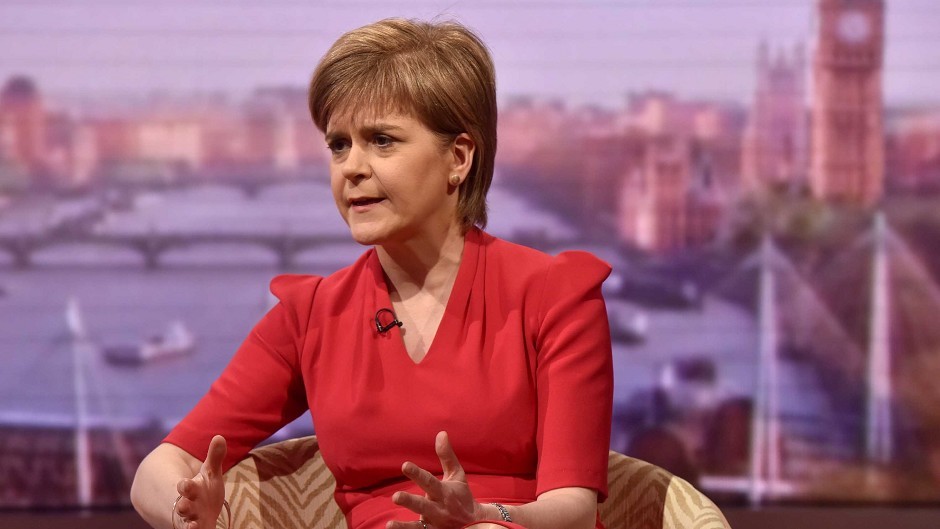Nicola Sturgeon’s plans for full fiscal autonomy for Scotland has been dealt a hammer blow by independent experts.
The widely respected Institute for Fiscal Studies (IFS) concluded Scotland likely faces “spending cuts or tax rises” even if full implementation is delayed for several years.
It forecast that the black hole in Scottish Government finances would hit £9.7billion by the end of the decade.
The SNP want Scotland to raise of the funds it spends. The party manifesto says the transition to full fiscal autonomy “would take a number of years”.
But the IFS analysis said that to close the fiscal gap by 2019-20, Scottish revenues per person would need to grow by more than twice as much as forecast for the UK as a whole.
David Phillips, of the IFS, wrote that with additional powers, the Scottish Government could grow the economy more quickly than the rest of the UK, shrinking the fiscal gap, but there was no guarantee it would be possible.
“Delaying a move to full responsibility for a few years would not on its own deal with the fiscal gap though,” he said.
“Indeed, if anything, given current spending and revenue forecasts, the gap would likely grow rather than shrink over the next few years.
“It would remain the case that full fiscal responsibility would likely entail substantial spending cuts or tax rises in Scotland.”
Scottish opposition leaders said the IFS report confirmed what they have been saying during the general election campaign.
Labour’s Kezia Dugdale said: “The experts at the IFS have confirmed what Labour said yesterday – the SNP’s manifesto means they have signed up to massive spending cuts that would make even the Tories blush.”
Liberal Democrat leader Willie Rennie said: “The independent Institute of Fiscal Studies have crushed the headline SNP commitment before the ink was dry on their manifesto.”
Scottish Conservative enterprise spokesman Murdo Fraser said: “The SNP is in full retreat on full fiscal autonomy – they have even tried to change its name to full fiscal responsibility, so embarrassed are they by it.”
SNP MP Kenneth Gibson said the IFS report showed Scotland’s deficit almost halving as a share of GDP by the end of the decade “without factoring in the measures we propose to boost the economy”.
“As the IFS acknowledge, these figures are before the end of the austerity that we want to see in order to grow the economy faster,” he said.
